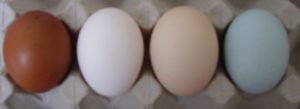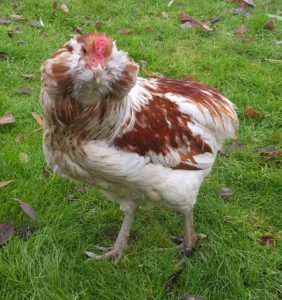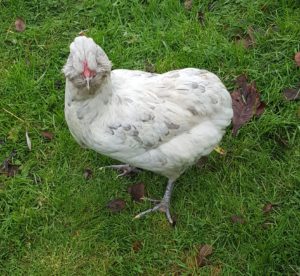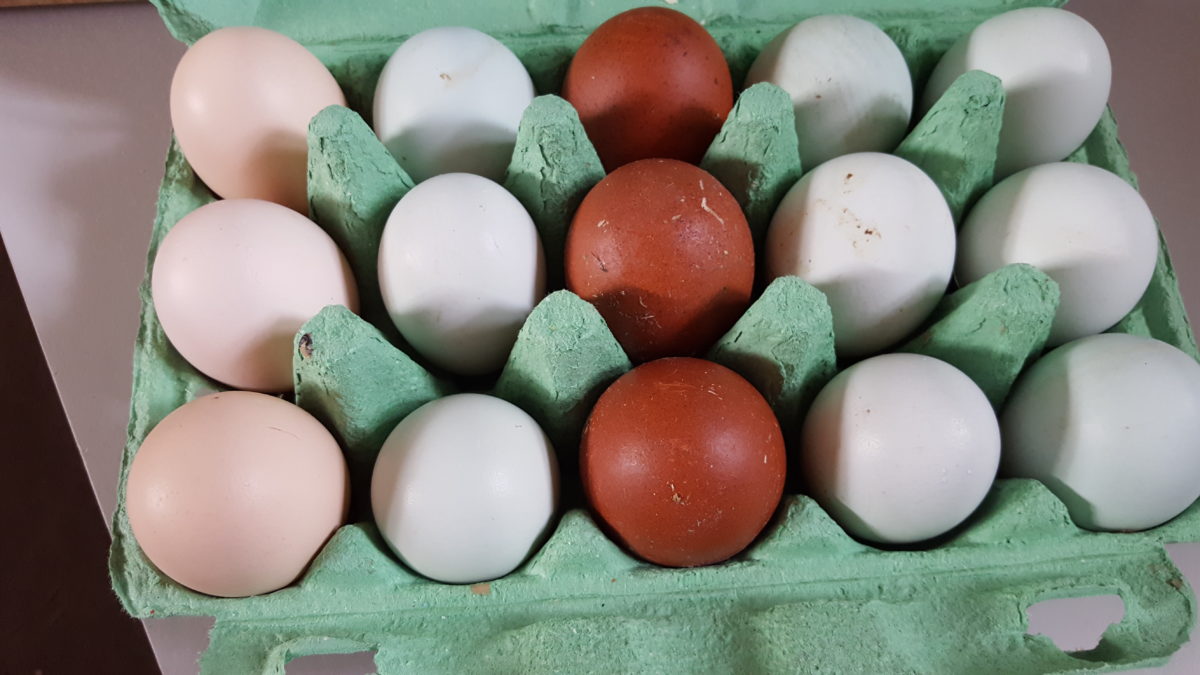How good are your eggs?
Most of us enjoy eating eggs. You can prepare them in different ways; boiled, scrambled, poached, and my favourite fried. Sunny side up, sunny side down, hard or runny, and they’re healthy as well. At least … most of the time.
But not all egg yolks look the same. Some eggs have dark orange yolks while other eggs have yolks that are much lighter in colour. So have you ever thought what could this mean?
- Does the colour of the yolk say anything about the chicken or about the nutritional value of the egg?
- And is the colour of the shell a contributing factor, or just a ‘designer’ egg?

Well, let’s have a look;
Yolk
People have said that the colour and shape of the yolk of an egg can tell you something about the health of the chicken that laid it. The general idea is that the darker, firmer and rounder the yolk is, the happier the chicken in question. It’s supposed to be a sign that this chicken had a lot of freedom to walk around and also had a rich and varied diet.
On the other hand, a lighter egg yolk is said to indicate an unhealthy life for the chicken. This information was long presumed to be the truth, but it turns out it isn’t true at all! But that leaves the question: what causes the difference in colour for egg yolks and what does it mean?

Eggs whites.
Have you ever cracked open an egg and popped it into the frying pan and the white disperses to the edges of the pan? This is the sign of an egg that is close to being out of date or could be from an older hen who is coming to the end of her laying days.
Commercial hen eggs can do this as they lay well over 300 eggs a year, whereas the pure breed lays less. Therefore we say you get a better quality egg for longer with the pure breed like a Sussex or Marans etc. Again, if you crack an egg in the pan and the white is very tightly held together with the yolk sat on top of it you have a very fresh egg. These eggs are also very good for poaching as they don’t separate around the pan but cook in a compact area.
Colour of the shell

Years ago you mainly bought white, tinted or brown shelled eggs. Now we have the introduction of the ‘designer’ eggs in the supermarkets. These come in blues, green, olive and mahogany. Below is a list of the pure breed egg layers of these different coloured eggs and there are more commercial layers available as well.
Dark brown
Marans and Welsummers are two of the most popular ones and Modern Langshan are not as well known but are my favourite because the mahogany coloured eggs have a purple sheen to them as well. Perfect for boiled eggs and dippy soldiers
Blue
Cream Legbars are the most popular blue egg layers and these are favourable as a breeder because they are sex linked. This means, due to their colour pattern when hatched, you can identify which one are males and females. The females are a partridge colour with a distinct stripe down their back. The males are a lighter colour with a white spot on the back of there head. You are then able to dispatch cockerels early saving feed bills and giving more room for the pullets to thrive. Cream Legbars were developed by Professor Punnet and Mr M Pease at Cambridge University in the first half of the 20th century. More information can be found in the Legbar post by clicking here
Green
Araucanas that originate from Chile in South Americana are the most popular green eggs layers, they come in a variety of colours and also as a rumpless version. The rumpless one usually has a pair of muffs, also know as ear tuffs or a moustache.
More information on the Araucana post can be found by clicking here


Olive.
Just like mixing paint, you blend the breeds together to develop a different colour. By using the dark brown eggs layer cockerel, like a Marans, with Cream Legbar blue layer pullets, the females of this breeding pen will lay an olive egg.
Feed
The one thing we know to be true right now is that egg yolks come in different colours; they can range from dark orange to light yellow. Well the main reason for this variation is down to what you put in delivers the outcome.
To explain further – If a chicken is housed up without a chance to forage and is fed on basic wheat you will get a light yellow yoke. However if a chicken is provided a well rounded feed that has a high percentage of protein and nutrients within it and she is allowed to roam the garden and peck and scratch and eat the grass, she will provide you with the very colourful rich orange coloured yoke and full of flavour.
A fishy story
I can recall my grandfather explaining that during the war, when food was short, they had to rely on feeding them fish meal as that was cheap. However the resulting outcome was the eggs tasted awful as the fish flavour was transferred into the yolk.
I told a lady this one day who had come to collect some laying hens she ordered. She remarked that made sense because one day she’d made Moules Marinière for dinner. Rather than just throw away the mussel’s shells, she crushed them and fed them to her hens. This was to help their egg shell thickness as hers were getting slightly thin. (Calcium and vitamin D3 are two of the main requirements for a good egg strong shell). However over the next few weeks her eggs had a most unusual flavour and she did not know why!!
There is a local food manufacturer whose protein content of their layers pellets is very high and our chickens like it. I believe one of their ingredients to strengthen the orange egg colour of the yoke is the addition of ground sunflower petals into the pellets. Should you wish to try some of these layers pellets yourself they can be ordered by clicking here
Outcome
Egg yolks contain vitamins A, D, E and K regardless of their colour. Some people prefer to buy organic eggs instead of eggs laid by chickens that are kept in close captivity. However, the truth is that the feed and environment of the chicken enhances the flavour of the egg. Just like life.. the more you put into it… the more you get out of it !!







